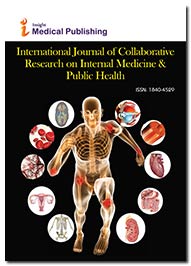Abstract
The Emotional Intelligence Features of Substance Use Disorders Patients: Pilot Research Results
Introduction: Previous research has revealed that differences in Emotional Intelligence (EI) competency existed related to gender and substance use disorders (SUD). Moreover, SUD patients had a high correlation between EI and drug/alcohol use13, 14, 15, 16.
Objective: The aim of this pilot research project is to establish and describe SUD patient personality factors relating to Emotional Intelligence and its constituting competencies.
Method: Bar-On Emotional Quotient Inventory - EQ-i 3 was used as the research instrument, which was adapted in Latvia by A.Gaitniece-Putane38, that includes five factors and 15 respective scales.
Result: The target population for this research were SUD patients (n=241) - 154 (63,9%) men, with an average age of 38,5 (SD=10,7) and 87 (36,1%) women, with an average age of 37,8 (SD=11,2; t=0,485; p=0,628) from two departments of Riga Centre of Psychiatry and Addiction Disorders. There were 183 alcoholics and 58 drug addicts in the participant group. There were statistically significant differences for alcoholics and drug addicts in two EI factors (Interpersonal and Adaptation) and on five scales (Self-actualization, Empathy, Social Responsibility, Problem Solving, and Impulse Control Scales). There were statistically significant differences between genders in the Interpersonal factor and on the Empathy and Social Responsibility scales. There were statistically significant differences for male alcoholics and drug addicts in the Interpersonal and Adaptation factors and on four scales (Self-actualization, Empathy, Social Responsibility, Problem Solving), but no difference on the Impulse Control scale. There were statistically significant differences for female alcoholics and drug addicts on only one EI scale (Problem Solving).
Conclusion: SUD patient EI indicators had a tendency to higher indicators, which leads one to believe that addict patients had difficulty being critical towards themselves, their illness and International Journal of Collaborative Research on Internal Medicine & Public Health Vol. 4 No. 5 (2012) 486 other people in their lives. This study requires additional investigation including repeat ttesting of the participant group six months after treatment as well as enlarging the sample group.
Author(s): Velga Sudraba, Elmars Rancans, Inga Millere
Abstract | Full-Text | PDF
Share this

Abstracted/Indexed in
- Google Scholar
- Genamics JournalSeek
- CiteFactor
- Directory of Research Journal Indexing (DRJI)
- WorldCat
- Proquest Summons
- Secret Search Engine Labs
Open Access Journals
- Aquaculture & Veterinary Science
- Chemistry & Chemical Sciences
- Clinical Sciences
- Engineering
- General Science
- Genetics & Molecular Biology
- Health Care & Nursing
- Immunology & Microbiology
- Materials Science
- Mathematics & Physics
- Medical Sciences
- Neurology & Psychiatry
- Oncology & Cancer Science
- Pharmaceutical Sciences

